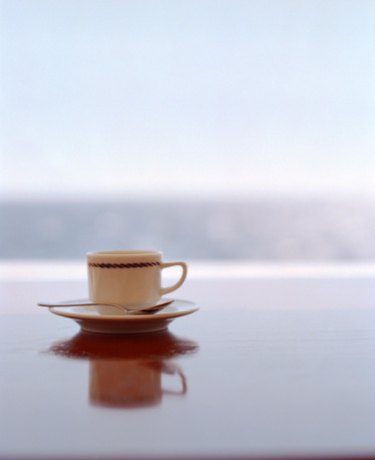Things You'll Need
Pencils
Paper
Eraser

Part of making a successful work of art is making the subject of an image believable. Adding the proper details is important towards this goal. Steam is a detail that tells the viewer that something is, of course, hot, which makes an image feel more real. Steam can also indicate the direction that something is moving. Drawing techniques for steam vary depending upon whether or not you want the steam to look realistic or cartoon-like. There are many options for styles of a cartoon-like cloud of steam.
Realistic Steam
Step 1
Shade around the object that you want to be "steaming" to create a plain field of color. Blend well using a chamois, tortillon or your fingers, though your fingers will leave prints which may show up in the picture.
Video of the Day
Step 2
Lightly draw a few S or C-shaped curves over the item that is steaming. Steam has an amorphous shape, so you can be creative. Make sure that the curves are generally going upwards unless it is windy or the object is moving. These lines are to help you plan where you want to put your steam.
Step 3
Lightly erase the area over and around the guide lines, moving up and down along the lines. Some areas will be darker and lighter, which is desirable.
Step 4
Shade lightly around the outer edges of the eraser "steam" to make it stand out more. You can also shade wisps of steam within the cloud. If desired, use a white pencil or chalk to make the steam slightly whiter. This is particularly useful if you find that there is too much graphite on your paper and the steam is not as bright as you would like.
Cartoon Steam
Video of the Day
Step 1
Draw a few S or C-shaped curves above the item that is "steaming." Curls and spirals are also appropriate. This is a fanciful way to draw steam.
Step 2
Draw a number of C-shaped curves over the steaming item, with the curve facing upwards. This suggests a big cloud of steam.
Step 3
Draw a few straight lines in the direction that the steam is moving, with a few C-shaped curves above the lines. The curve must face in the general direction of the steam. This suggests steam that is forced or moving quickly; for example, it would be good to draw over the spout of a teapot.
Tip
Look at pictures of steam, particularly if you want the steam to look realistic.